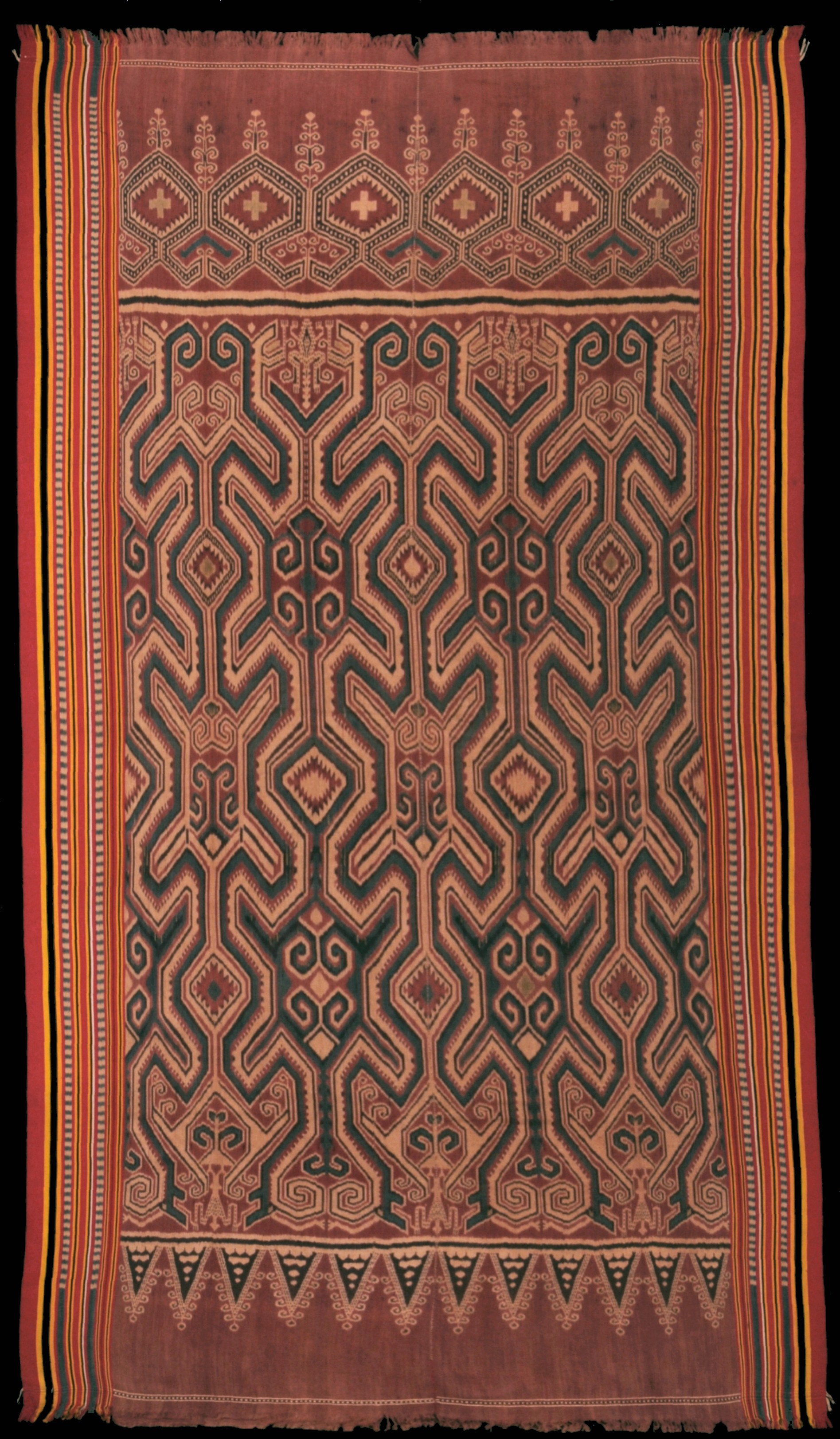| |
 mouse over to magnify mouse over to magnify
| | | | 041 Borneo, Sarawak
Pua kumbu
| | Locale: | Iban Dayak, Second Division, probably Batang Lupar River. | | Period: | 1920 | | Panels: | 2 | | Design: | Interlacing shapes executed in brick red, cream and light indigo with touches of (faded) yellow/green. Borders in bright yellow, red and black toko yarn. Pattern identified by Gavin as Suri Ai, 'rippling water' or Remang Berarat, 'drifting clouds'. Kedit likewise identifies it as a form of Remang Berarat. Ong has it as Bu-Bu, 'fish traps'. The pattern is very similar to the most common Toraja pattern, and probably represents the ancient 'birth' pattern seen across Southeast Asia. | | Size: | 111 x 197 cm (43.7 x 77.5 in) | | Weight: | 515 g (236 g/m2) | | Yarn: | Cotton, hand-spun, fine - plus pinstripes in commercial cotton | | Comment: | Beautiful Iban pua of unusual design. Excellent weaving, clearly better than found on other known examples of this pattern type. 'Rich' wide borders of factory made yarn bought from Chinese traders, a labour-saving device that also denotes wealth. | | Background: | Additional information in chapters on Borneo and Sarawak. | | Published: | Carpet Collector 4/2014. | | Compare: | 039 | | Sources: | Gittinger, Splendid Symbols, Fig. 166, and photograph on p.212, showing a woman wrapped in similar pua. Khan Majlis, Indonesische Textilien, Wege zu Goettern und Ahnen, Fig. 679. Similar also to pua depicted in Gavin's contribution to Nabholz-Kartaschoff c.s., Weaving Patterns of Life, Fig. 1, but more intricate. Very similar also to (less finely detailed) pua in collection of Los Angeles County Museum of Art, No. M.77.113.2. Similar to pua from Baleh river area in Art Institute of Chicago, Bakwin Collection, Nr. 2002.948. Style similar to Layar pua depicted in Heppell c.s., Iban Art, Fig. 97 and to Kria pua on Fig. 44. Similar cloth, but less detailed in Edric Ong, Pua, Iban Weavings of Serawak, where the pattern is identified as bu-bu or fish traps. A similar pua is shown in Ong, Pua, Iban weavings of Sarawak, held up by three masters weavers, p.24. | | |
 ©Peter ten Hoopen, 2024
All rights reserved.
|
|


